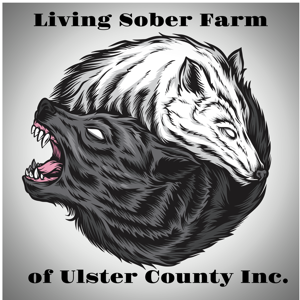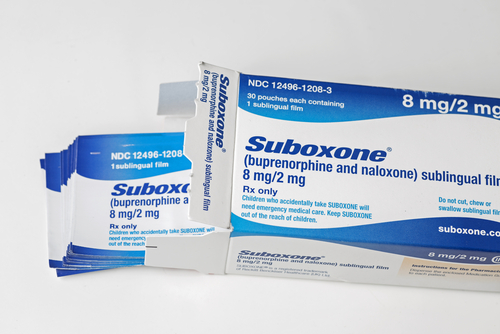The trend in current addiction treatments is moving more towards harm reduction and less towards abstinence as a goal in recovery. Even the definition of the word "recovery " has been changed to mean any positive change that has occurred.
DETOXING
Detoxing is typically performed in a hospital setting. Depending on the substance and the severity of the addiction, detox can be life threatening. Many health insurance policies will cover a portion of the cost for detox services. Detox will generally take 5 to 7 days reaching peak withdrawal around day 3 and 4. Again, it depends on the addiction and severity of the addiction. Often the partial agonist, buprenorphine will be administered to lessen the severity of withdrawals. Depending on the insurance policy and severity of the addiction, the patient may be transferred to an inpatient rehab for 2 to 4 weeks. Upon release the patient be encouraged to continue a buprenorphine or methadone regimen along with out-patient therapy groups and counseling. If no insurance policy is available, the cost may be from $600 to $1,000 each day according to the National Institute on Drug Abuse.
INPATIENT SERVICES (REHABS)
Rehab treatment centers are increasingly difficult to find and difficult to get into. There are many hoops to jump through. You will need to qualify to get in, pass the insurance requirements, pass the "can you afford to pay the 50% co-pay" questions, and then you may be able to go on a waiting list, before you can take advantage of an inpatient treatment center. You will likely find that if you or your family is NOT independently wealthy, your insurance company will boot you out after a short period of time. Typically, a short time is considered 2 to 4 weeks. THIS IS NOT ENOUGH TIME! Once you come out of rehab, you are not "cured" and you are extremely vulnerable to overdose as you are returned to the same environment you left behind only now you have a lower tolerance for your drug of choice. Unless you can find a rehab to keep you longer than six months, the statistics on success are dismal.
The reality of our rehabs is that it may take months on a waitlist before you actually get admitted. Although some may do detox on site, some do not and you will still need to go through a detox process before you can get in. After all of the frustration and the expense of the detox process and the co-pay for the treatment center, the short-term treatment period is ineffective and you find yourself back where you started once released, only now you or your loved one is extremely vulnerable to overdose because the tolerance level is much lower. It is the most dangerous time for someone in recovery.
On average an individual enrolled in a New York residential rehab can expect to pay $56,653 according to the National Center for Drug Abuse Statistics.
There are no rehabs left in Ulster County but there are a handful in the surrounding counties.
So it goes when profit drives the industry-- evidence that supports tele-health services and medication assisted treatments needs to be more transparent and detailed. It makes sense that the cheaper options would drive the healthcare system. If you are only covering these services because it is mandatory, then it is the shareholders, not the patients who matter most. Insurance companies subcontract their addiction services to the lowest bidder and costs are cut to the barest minimum allowable. This might be fine if were enough, but sadly, it is not working. Deaths and accidents from addiction continue to rise and devestate our people.
Patient brokering is a system in which individuals suffering from a substance use disorder are being lured into treatment facilities and sober living homes, often in other states, sometimes lured with promises of free housing, plane tickets or other incentives. The patient brokers receive generous financial kickbacks from these facilities. The incentive is not to meets the needs of the individual, but instead to simply fill beds with heads. Many times these brokers use deceptive marketing practices and it has been alleged that in a few instances, patients were incentivized to relapse. Patient brokering has been brought to the attention of the Subcommittee on Oversight and Investigations of the Committee on Energy and Commerce, House of Representatives, in document Serial No. 115-87 dated December 12, 2017. In this document are personal testimonies from several cases of abuse.
BUYER BEWARE!
MEDICATION ASSISTED TREATMENTS
Medication assisted treatment, or MAT, is the use of FDA-approved medicines in concert with behavioral counseling for opioid addiction that has proven efficacy. Multiple studies have shown that MAT is essential to effective long-term recovery, by reducing cravings and the risk of fatal overdose and increasing abstinence and time in treatment. MAT is widely accepted and scientifically proven for successful treatment of opioid addiction. It is recommended by the National Institute on Drug Abuse, the World Health Organization, UNAIDS, and many other physician groups, as the standard of care.
Methadone has been administered to fight addiction since 1971. It is addicting in itself and the CDC attributes about 5,000 deaths a year from methadone overdose. Long term methadone use has been found to cause damage to the nerves, liver and brain.
Buprenorphine (Suboxone, Subutrex) has become the increasing popular treatment and is about 25 to 100 times more potent than morphine. It is combined with naloxone to prevent the euphoric high that the opioid by itself would give the user. It is used to manage the addiction and so has prevented many overdose deaths. It is useful only as long as you take it. It is a 'harm reduction' tool because it reduces the risk of dying from an overdose. The pharmaceutical drug is subject to strict manufacturing regulations thus reducing the chance of contamination from other deadly substances such as fentanyl. This drug has its own side effects, is also addictive and can be dangerous if not taken correctly, sometimes deadly if used with benzodiazepines, alcohol, or many other drugs which can raise the risk of breathing problems. It is only of use for managing opioids / opiate derivatives, and managing pain. It has no effect on addictions to other substances. According to SAMSHA common side effects include severe constipation, headache, nausea, vomiting, dizziness, dry mouth, fatigue, musle aches and cramps, inability to sleep, fever, blurred vision, tremors, palpitations, and disturbance in attention. Do your homeword before beginning a suboxone regimen. A good place to start is "5 Things to Know Before Starting Suboxone Treatment" by Justin Baksh.
Naltrexone blocks the effect of opioid medication and is used for drug or alcohol dependence. It is not a narcotic but works by blocking the effects of narcotics. It will not cause physical or mental dependence and will not prevent you from becoming impaired while drinking alcohol. It may cause serious problems with the liver and may increase thoughts of suicide. It too has side effects.
"A Closer Look at the Evidence" shows that the outcome of MAT does reduce overdoses and its success is measured by evidence showing that the patient is able to return to work, family life is improved, and he or she can participate in community life. While these are important outcomes, the author believes it fair to say that most patients and families would consider these criteria necessary but not sufficient. Remember that MAT is a morphine derivative, an opioid which is how it reduces the need to use. It must be noted that MAT is not a cure. The evidence also shows that MAT as high dose buprenorphine had a better patient retention 31% at 26 weeks and 20% at 52 weeks (a fairly short study) then high dose methadone which lost 69% of its patients and at the low dose, lost 80%. The author, Jason Schwartz, notes that he is not arguing against access to any kind of care. He is just pushing for you to make informed decisions. (https://recoveryreview.blog/2016/10/09/a-closer-look-at-the-evidence-part-1/)
ABSTINENCE
Not too long ago, abstinence was considered the road to recovery. Three years ago, the definition of recovery was changed and so was the 'gold standard' of treatment. Recovery is now considered a progression of positive signs which lead to a more normal lifestyle. Things like being able to hold a job and showing signs of responsibility are some of the positive improvements which define 'recovery'. Correlating with this new definition of recovery is the reduction in available rehab centers and the reduction in time allowed to spend in one. It also coincides with the availability of medication assisted treatment ,out-patient sessions and tele-therapists.
Medication is the new chosen treatment because it is 'evidence based' and promoted by the insurance companies. There is also strong evidence to show that abstinence works too. But in order to achieve success through abstinence, there needs to be a long term support system in place - generally 3 to 5 years. This is what the Recovery Farm Community is all about. At the Farm, we understand you will need to stay up to 5 years or longer under certain circumstances.
Why choose abstinence? There are too many people for whom the medication assisted program does not work. It does not work on addictions other than opioids or on people with multi-addictions nor does it always work for those in critical stages of addiction. It is an option which works for many and for them we are happy. We strongly believe that abstinence needs to be promoted as an option. It is too important not to consider it.
About PHPs (Personal Physician Health Program)
PHPs were originally proposed in 1973 by the American Medical Association to help addicted physicians (and the public they serve).The airline industry also has a similar program called HIMS. These programs exist so that we (the public) do not need to be operated on by a physician or fly in a plane operated by a pilot impaired 'on' a pharmaceutical opioid. These programs and others like them, have shown us that long term, abstinence-based programs are the real 'gold standard'. The key is a long-term plan and a strong support system. Studies have shown that after three years of abstinence in a PHP type program, there is a 70% chance of long-term success. After five years, the success rate jumps to 80%!
For a proven "gold standard addiction treatment", see "Setting the Stage for Recovery: Physicians Health Programs."DuPont RL, McLellan AT, White WL, Merlo LJ, Gold MS. Setting the standard for recovery: Physicians' Health Programs. J Subst Abuse Treat. 2009 Mar;36(2):159-71. doi: 10.1016/j.jsat.2008.01.004. PMID: 19161896.
Why are these programs not available to the general public?
OUTPATIENT SERVICES
Outpatient rehab is a form of substance abuse treatment that doesn't require overnight stays at a hospital or inpatient facility. It can be an effective option for those suffering from substance abuse disorders (SUDs).
There are many different outpatient services available:
- Group counseling
- Family counseling
- Educational programming
- One on one counseling
- Private Doctor specialized addiction services
- Skilled training programs
- Life skills training
- Relapse prevention counseling
- Case and clinical management
- Long term care focused on relapse prevention
- AA and NA meeting throughout the county
Types of Outpatient Rehab:
- Partial hospitalization programs (PHPs), sometimes referred to as day treatment." These programs provide a mix of medical and clinical support from different specialties to provide an intensive treatment each week for those who require daily (or near daily) monitoring in a structured setting.
- Intensive outpatient programs (IOPs), These programs also provide a team of medical and clinicians from various specialties, but less intense then PHPs
- Standard outpatient services (OPs), Programs which are designed to help patients focus on achieving changes in behavior associated with substance abuse. There is little, if any, medical services offered at this level of care
Contact local area providers or ask your doctor for services that are available to you.
RECOVERY RESIDENCES
Recovery Community Housing is a "missing in action" option which should be made available to all victims of critical level of addiction and/or alcoholism. Long-term recovery is generally 2 to 5 years or more depending on individual progress. It offers housing where the person in recovery can feel safe or protected against the triggers of the life left behind. In this community of peer support, one can feel protected, respected, productive, forgiven, loved and needed. Why are we not providing this opportunity at a time where so much money is made available through lawsuits against companies who caused great harm to thousands of people and their families?
Recovery from addiction to alcohol and other drugs is defined as a dynamic change process through which individuals improve their health and wellness, live self-directed lives, and strive to reach their full potential. However, much time is needed, years, not weeks or months, for one to stabilize and begin the physical, mental and spiritual process of healing. As the new mother is told that her body will take nine months to get back to what is was (almost!), so the addict will take many years to heal as it took many years to get to this critical state of addiction. The longer a recovering person remains in a sober environment, the greater his or her chances are to achieve a long-term sobriety.
Research indicates that recovery housing provides residents the best chance of achieving sobriety and is associated with:
- Decreased substance use
- Reduced probability of relapse
- Lower rates of incarceration
- Higher income
- Increased employment
- Improved family functioning
A study found at the National Library of Medicine, National Center for Biotechnology Information,"Predictors of early dropout in outpatient buprenorphine/naloxone treatment", by Dr's D Marcovitz, R. McHugh, J. Volpe, H. Connery and V. Votaw, BA published online 2016 Jul 21, doi: 10.111/ajad.12414, shows that 56 of 202 participants dropped out of treatment and suggests that these high risk patients may need more intensive interventions including more family education and support and sober housing supports.
There are several nonprofit organizations which have achieved successful models of recovery housing. The Oxford Housing is perhaps the most well known and much information can be found on their website, https://oxfordhouse.org.
12 STEP PROGRAMS (Alcoholics Anonymous and Narcotics Anonymous)
12 Step programs have helped many people over the years, although there are no hard statistics to give you. Every option deserves a chance and AA and NA meetings can be found all over town. The meetings offer peer support and help many to retain their sobriety. There are different types of meetings and you may need to go to several different meetings to find a fit for you. All participants of the 12 step meetings get to know the Serenity Prayer:
God grant me the serenity
To accept the things I cannot change;
Courage to change the things I can;
And wisdom to know the difference.
Living one day at a time;
Enjoying one moment at a time;
Accepting hardships as the pathway to peace;
Taking, as He did, this sinful world
As it is, not as I would have it;
Trusting that He will make things right
If I surrender to His Will;
So that I may be reasonably happy in this life
And supremely happy with Him
Forever and ever in the next.
Amen.
Sometimes the short version of the AA Prayer is used:
God grant me the serenity
To accept the things I cannot change;
Courage to change the things I can;
And wisdom to know the difference.
You can find many local groups in Ulster County at http://ulsterdistricts.aahmbny.org/blog/meetings/?tsml-day=any
and https://www.narcotics.com/na-meetings/new-york/kingston-new-york/
For the national AA organization, go to https://www.aa.org/


